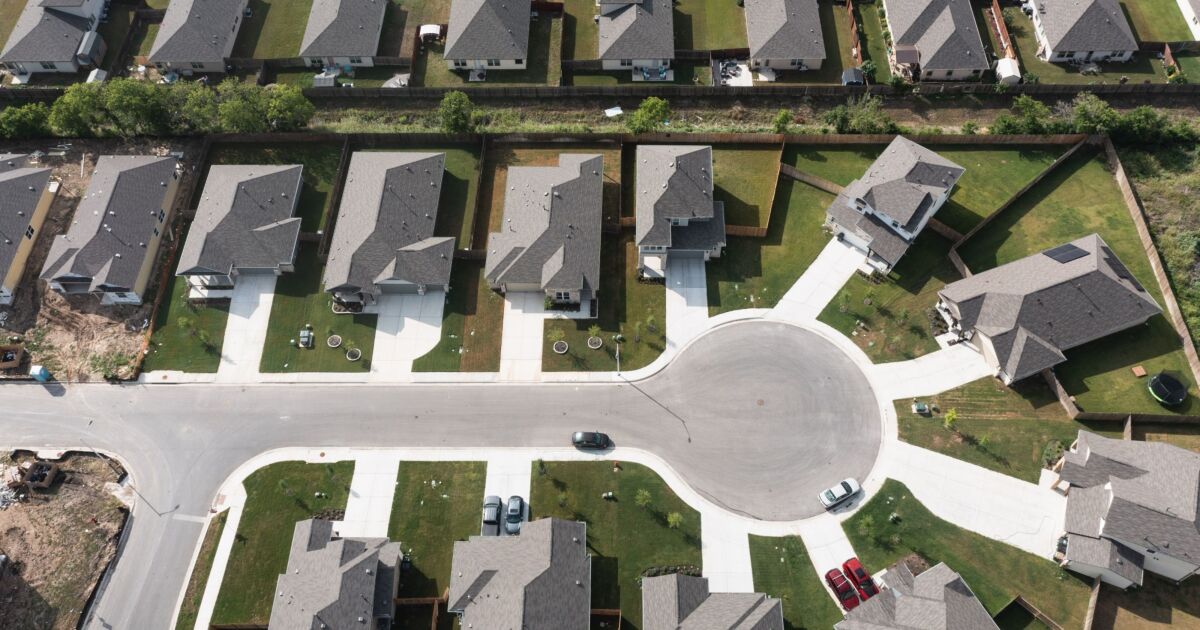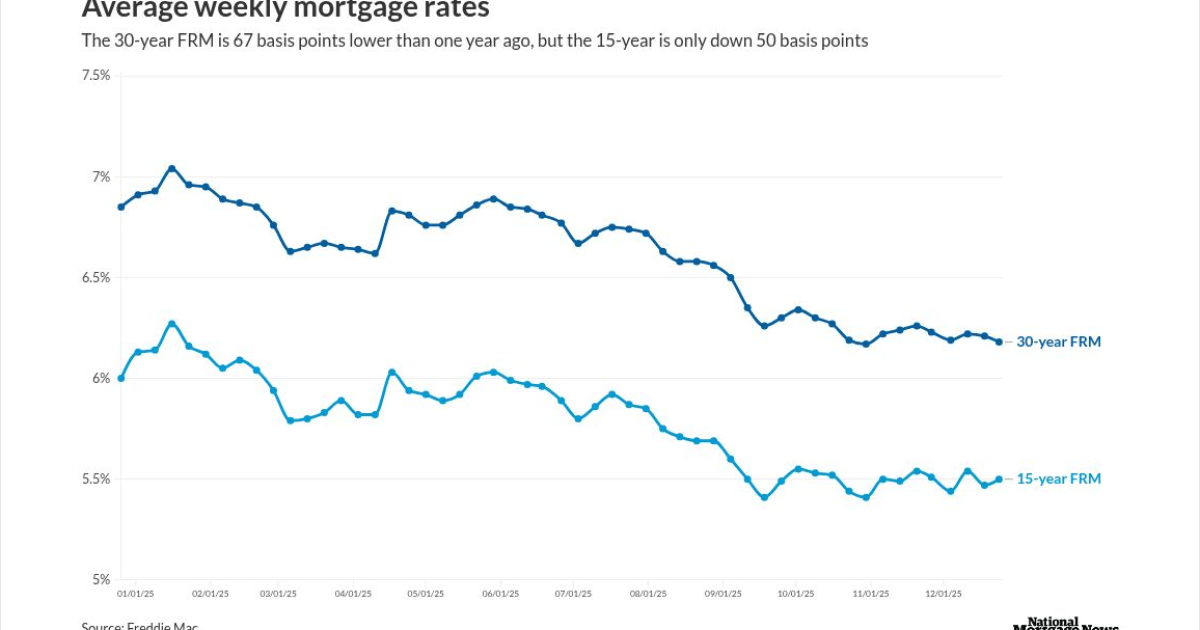
The number of homeowners who can reduce their monthly payments by refinancing hit a multi-year high as mortgage rates continue to weaken, new industry data found.
The 30-year fixed-rate mortgage
"The recent easing in mortgage rates has begun to open the refinance window for many borrowers, particularly those who originated loans in the past two years," said Andy Walden, head of mortgage and housing market research at ICE, in a press release Monday.
"At the same time, homeowners still have near-record amounts of tappable equity, and the cost to access that equity continues to improve. Together, these trends are creating meaningful opportunities for borrowers to leverage rate-and-term refinances and second-lien home equity products."
Additionally, 4.1 million borrowers were "in the money" for a refinance, meaning they could save at 75 basis points by doing so. Mortgage rates
In last month's report, around
This month's report also found that home equity has become more accessible, supporting home equity lending. Borrowers entered the fourth quarter of this year with $17.3 trillion in home equity, of which $11.2 trillion can be accessed with a home equity loan while still maintaining a 20% equity stake in the property.
While equity growth has slowed in recent months, the monthly cost to withdraw $50,000 in equity has dropped by more than $100 as the home equity line of credit interest rate fell to near 7% in the third quarter.
This swing toward HELOC comes as banks are
With flattening equity growth comes affordability for homebuyers. ICE's Home Price Index showed annual growth increased 0.9% in October, as affordability hit its best level in two and a half years, the report said. Single-family homes went up 1.2% last month, while condos dipped by 1.8%.
The third quarter showed
"As refinancing and equity-tapping become more favorable, lenders and servicers have an opportunity to proactively support borrowers," said Tim Bowler, president of ICE, in the release.
Mortgage performance produces mixed results
The number of borrowers a single payment past due decreased by 11,000, dropping the delinquency rate by two basis points. Loans 90 or more days past due but not in foreclosure decreased 1% from August as well.
Prepayment activity also improved to 0.74% as rates decreased, up almost 15% from a year ago.
But foreclosures starts spiked 23% year over year in the third quarter, while loans in active foreclosure increased 18%. Still, both numbers remain comfortably below 2019 levels.



